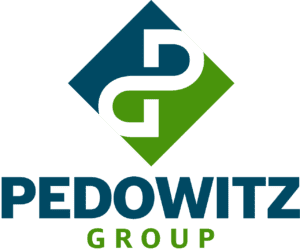We have a client who has built an entire business on the concept of last mile delivery. You’ve probably experienced this type of service if you’ve ever bought something from Lowe’s, Home Depot or Ethan Allen. This service is responsible for delivery and custom setup of products you have purchased. Your washer and dryer set is delivered, installed, tested and working before the delivery company leaves. That bedroom suite is hauled up the staircase to the bedroom, set up and placed exactly where you want it to create the perfect space. This type of white glove service is the only link in the supply chain that directly touches the customer. It represents a unique opportunity to create an experience that leads to customer delight, additional business and loyalty .
.
The last mile concept is a key ingredient to marketing automation success because it helps to deliver the ultimate promise of marketing automation and because it takes into account the concept of sales as the ultimate customer in a “lead” supply chain ecosystem.
Marketing Automation as the Backbone
The promise of marketing automation is that marketing will become a revenue-driving element in the company’s overall revenue engine. We call this Revenue Marketing™ and further define it as transforming marketing from a cost center to a revenue center. Marketing automation is the technology backbone of this transformation.
Inherent in the definition of Revenue Marketing is the concept of sales as the ultimate customer in a “lead” supply chain ecosystem. Once marketing begins the shift to drive revenue, shifting their focus to sales is critical. Just like marketing creates personas for the people they market to, marketing needs to create the persona of the sales team too understand who they are and what they need.
Finally, marketing is also responsible for building a “lead” supply chain ecosystem. This is often called the lead funnel and it is characterized by repeatable and predictable conversion rates at different points in the lead supply chain, and how the overall lead supply chain is scalable to additional markets and bigger volumes. Again, marketing automation is the backbone of this lead supply chain ecosystem.
So, how valid is this analogy? How are elite revenue marketers using marketing automation to treat sales as the ultimate customer, to build a “lead” supply chain and deliver last mile service? And what impact is this having on revenue and the company?
Four Last Mile Strategies
As part of the research for my book, The Rise of the Revenue Marketer, I recently conducted 24, one-hour interviews with marketing executives. This wasn’t a random sample. It was a carefully selected group of elite revenue marketing executives who are using marketing automation to help transform their marketing organizations from cost centers to revenue centers. A strong and recurrent theme across all the interviews was the absolute requirement of treating sales as the ultimate customer in a “lead” supply chain ecosystem by creating an ongoing series of delightful customer experiences, powered by the optimal use of marketing automation. That’s a mouthful!
To make it easier to digest, here are four Last Mile Strategies you can put into action using your marketing automation system.
- Start with the first mile
- Deliver what the customer asked for per the signed order form
- Be responsive to customer changes
- Ensure client satisfaction with every delivery
Start With The First Mile
Starting with the First Mile refers to keeping the customer first in everything you do. From a Revenue Marketing perspective, this emphasis is essential and many of the marketers I interviewed were almost rabid around their focus on the sales team as the ultimate customer. More importantly, when marketing steps up to the plate to take revenue responsibility, the focus shifts immediately. Sally Lowery, of Appia, understands this dynamic very well.
“When you take responsibility for revenue, it’s a very different conversation than we want to buy this marketing automation system and put out these campaigns,” said Sally. “I don’t talk about leads anymore with sales – I talk about revenue and how to meet our joint acquisition and revenue goals. As you get that alignment with sales, everyone is speaking the same language and sharing the same goal. Then the vision is more easily accepted at the C-level and everyone gets really excited about it.” – Sally Lowery, Serial Revenue Marketer and Senior Director of Marketing, Appia
Deliver What The Customer Asked For Per The Signed Order Form
Sounds simple, doesn’t it? Yet, for many marketers, they simply do not understand what sales needs, they don’t understand the lead supply chain and exactly what needs to be delivered to the sales team. One of the great features of marketing automation is the ability to score a lead based on their demographic data (company size or vertical) and online behavior (what they downloaded or what page of your website they visited). Lead scoring provides the ability for sales to tell marketing exactly what they need and allows sales to sign the order form on the purchase. Now this can only happen if you create lead scoring in a joint activity with sales. Eva Tsai, at Citrix, has won awards for her work in lead scoring. Eva and her team reviewed four years of online behavior to create a structured, validated, and predictive model of online behavior that was translated into a highly successful lead scoring model.
“Once you have the data and access to the digital body language, you should be able to do a regression analysis correlated to conversions. It’s not rocket science. Honestly, I am surprised that we have won awards for this work. Why would anyone do otherwise?” – Eva Tsai, Director of Marketing Operations at Citrix
The concept of the order form is also important to Revenue Marketing success and it translates to Service Level Agreements signed by both marketing and sales. Just ask Liz McClellan, at PGi. One of her first actions once she came into the company was to talk to sales about helping with revenue and lead quality. To operationalize this conversation, both in the marketing automation system and in process, Liz set up a two-day workshop attended by both sales and marketing.
“To kick it off, sales and marketing leaders attended a two-day workshop and came up with 16 agreements on the lead management process. They hammered out what a lead looks like, who should get it and when, how sales will work it, and the results they expect to show. Today, these are called service level agreements (SLAs) and are an integral part of the sales and marketing infrastructure. Sales and marketing meet monthly to talk about results and how to tweak and improve the process.” – Liz McClellan, VP of Field Marketing, PGi
Be Responsive To Customer Changes
Just because you’ve ordered that bedroom suite and have an idea for where to place it, doesn’t mean there might not be a better way once you actually get it in the room. The same thing applies to campaigns you create in your marketing automation system. Even if you work with sales to define what they need, once the campaign starts, sales might gain a better understanding of what is working and what is not. This is often a key role played by a telemarketing group, a team that sits between marketing and sales. Your ability to quickly adjust based on this feedback is critical. Kristen Wright, at Pinstripe, uses telemarketing to quickly respond to changes.
“With the complexity of our industry and how high touch our salespeople are, bringing tele-services inside improved the hand off and maximized use of our technology. Now we actually research before calling, capture accurate notes and put leads in the right nurture track. We use social media, email and the phone as channels, as opposed to focusing so much on just the phone.” – Kristen Wright, VP of Marketing at Pinstripe
Ensure Client Satisfaction With Every Delivery
In the beginning of this article, I began by talking about one of our customers and how they have built their business around last mile logistics. Key to their success is also ensuring client satisfaction with every delivery. They use technology to provide a survey within 15 minutes after every delivery is complete, they run their business based on these customer evaluation scores, and further, everyone’s compensation is tied to these key metrics. For the marketer using marketing automation, the best way to score is to measure metrics that matter. The combination of marketing automation integrated with CRM allows key measurements such as: Number of leads accepted by sales, conversation rate of leads to opportunities and close, and finally, percentage contribution to pipeline and closed business from marketing. Finally, tying marketing compensation to this ultimate measure of client satisfaction is the key factor in changing behavior. Patty Foley-Reid, at Iron Mountain, knows this first hand.
“We have an additional incentive compensation for hitting our revenue number that is anywhere from 10-20% of our salary. We’ve been doing this for three years now and it’s a little scary because it’s so highly dependent on the data, but it has made everyone hyper-focused on revenue.” – Patty Foley-Reid, Director of Inbound and Content Marketing at Iron Mountain
Conclusion
I’ve seen many marketing teams do a fantastic job of producing qualified leads and have next to nothing to show for because that “last mile” was not set up properly. What have you seen? I’d love to hear about your experiences!
